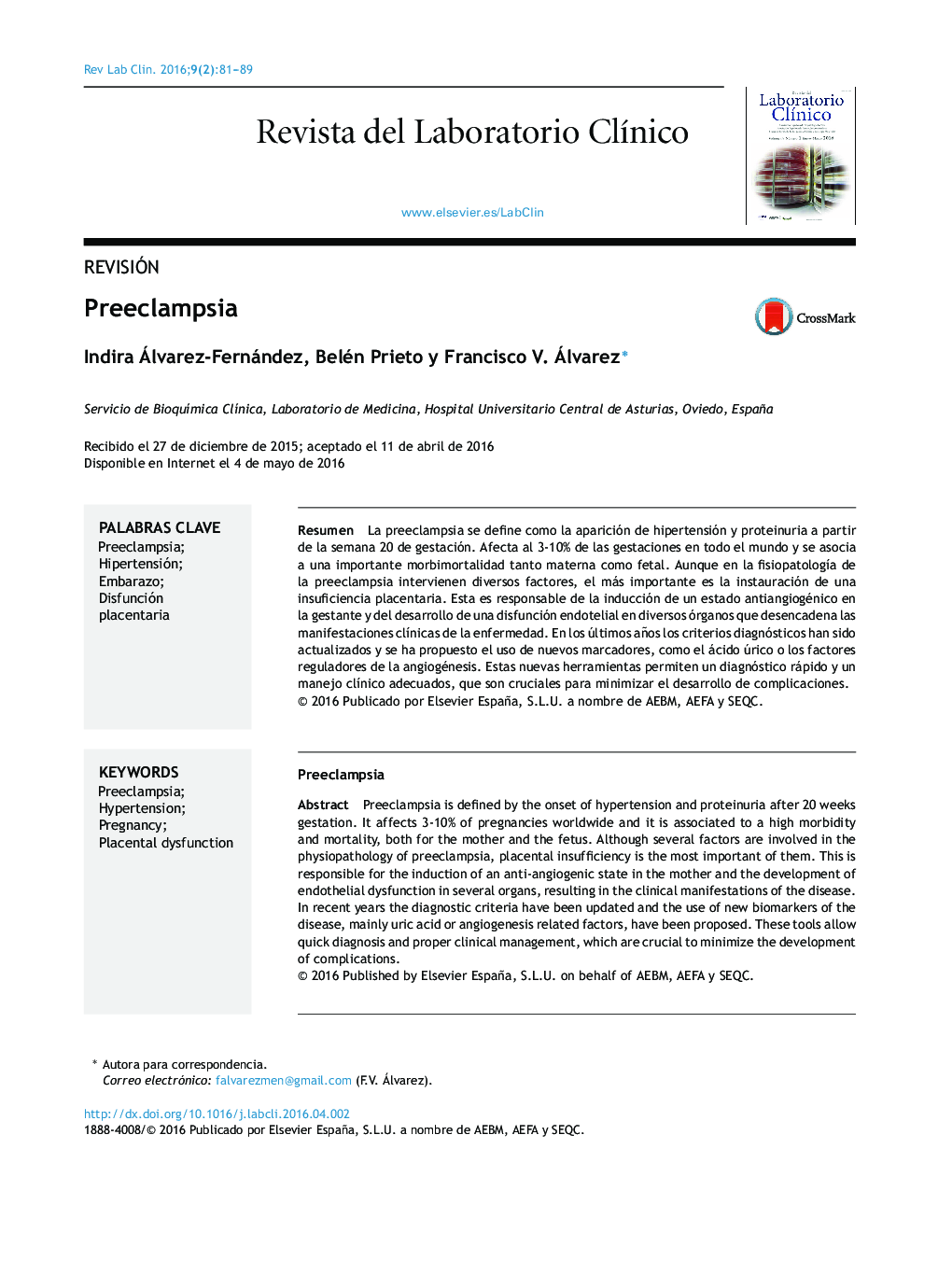| Article ID | Journal | Published Year | Pages | File Type |
|---|---|---|---|---|
| 2578004 | Revista del Laboratorio Clínico | 2016 | 9 Pages |
Abstract
Preeclampsia is defined by the onset of hypertension and proteinuria after 20 weeks gestation. It affects 3-10% of pregnancies worldwide and it is associated to a high morbidity and mortality, both for the mother and the fetus. Although several factors are involved in the physiopathology of preeclampsia, placental insufficiency is the most important of them. This is responsible for the induction of an anti-angiogenic state in the mother and the development of endothelial dysfunction in several organs, resulting in the clinical manifestations of the disease. In recent years the diagnostic criteria have been updated and the use of new biomarkers of the disease, mainly uric acid or angiogenesis related factors, have been proposed. These tools allow quick diagnosis and proper clinical management, which are crucial to minimize the development of complications.
Related Topics
Life Sciences
Biochemistry, Genetics and Molecular Biology
Clinical Biochemistry
Authors
Indira Álvarez-Fernández, Belén Prieto, Francisco V. Álvarez,
